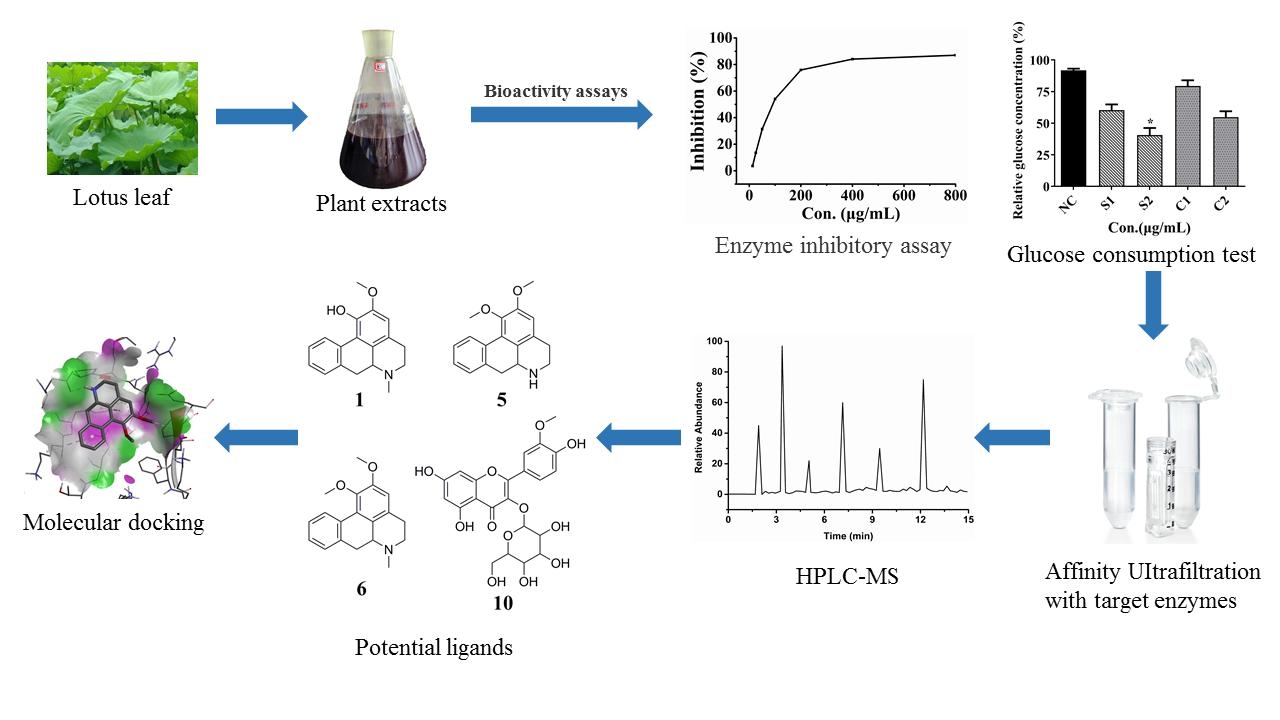Name:GUO Mingquan
Tell:
Email:guomq@wbgcas.cn
Organization:Wuhan Botanical Garden
Lotus Leaves Help to Treat Diabetes, Obesity and Inflammatory Diseases
2022-03-18
Leaf of Nelumbo nucifera Gaertn. (lotus) has been used as the traditional herbal remedies for the treatment of obesity, diarrhea, nervous, disorders, insomnia, hyperglycemia, and skin diseases. These traditional applications suggest its potential activity in hypoglycemic and hypolipidemic effects. However, the active ingredients responsible for these beneficial properties and their interaction with corresponding enzyme targets remain elusive.
Ph.D. student ZHANG Hui, supervised by Prof. GUO Mingquan of Wuhan Botanical Garden, screened and identified natural candidate ligands of lotus leaves through bioaffinity ultrafiltration combined with high-performance liquid chromatography-mass spectrometry (UF-HPLC-MS/MS), combined with molecular docking technology.
Results found that lotus leaves significantly enhanced the glucose consumption of HepG2 cells, and the activity effect was similar to the positive drug of metformin. In addition, lotus leaves showed noteworthy inhibitory activities against three enzymes: α-glucosidase, pancreatic lipase, and COX-2, which related to the control of blood glucose, blood lipids, and inflammation.
Based on the above research, a natural ligands screening strategy based on multi-target UF-HPLC-MS/MS was established. As a result, four possible ligands targeting the above three enzymes were screened and identified, which were N-nornuciferine, Nuciferine, 2-Hydroxy-1-methoxyaporphine, and Isorhamnetin 3-O-glucoside. Among them, N-nornuciferine had strong inhibitory activity on pancreatic lipase, α-glucosidase, and COX-2. In addition, the interaction sites and forces between various ligands and target enzymes were also revealed.
The present study will facilitate to explain the various traditional usage of lotus leaves to treat diabetes, obesity, and inflammatory diseases, and also provide valuable guides for the development of traditional medicinal plants with multi-targets and multi-purposes.
This work was jointly supported by the Natural Science Foundation of China, the Natural Science Foundation of Hubei Province, and the Biological resources program, Chinese Academy of Sciences. The above results were published in Food Chemistry entitled “Potential hypoglycemic, hypolipidemic, and anti-inflammatory bioactive components inNelumbo nuciferaleaves explored by bioaffinity ultrafiltration with multiple targets”.

Experimental process of screening potential hypoglycemic, hypolipidemic, and anti-inflammatory bioactive components in lotus leaves (Image by ZHANG Hui)